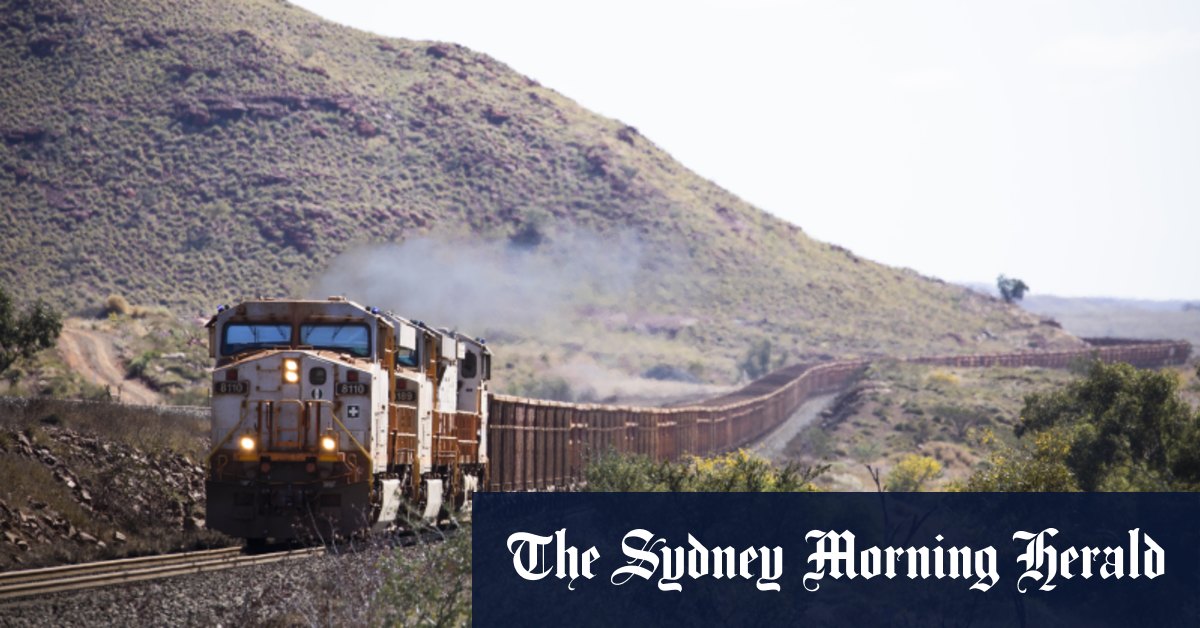
Loading
Like BHP, Rio is considering moving to crush ore in the mine pit allowing the rock to be moved on a conveyor powered by renewable electricity, reducing long trips by trucks.
A move to greener mining may also reverse an industry trend to achieve economies of scale with ever bigger trucks.
With the introduction of autonomous trucks, which Rio already operates more than a hundred of, using more but smaller trucks to better match the capability of existing battery technology no longer incurs the cost of extra drivers.
Smaller trucks have the advantage of being able to use narrower roads that would allow steeper pit walls, reducing the amount of earth to be moved to access the ore.
Mr Trott said Rio was leaning towards batteries being practical before hydrogen for emissions-free trucks.
“But we’ll certainly have the optionality to switch between the two,” Mr Trott said.
Rio and its principal Pilbara iron ore competitor BHP have both agreed to work with the two global giants of earthmoving equipment – Caterpillar and Komatsu – to develop zero-emissions trucks. Komatsu plans a “power agnostic” truck that could use conventional diesel-electric power, tram-like overhead wires, batteries or fuel cells that generate electricity from hydrogen.
Electrifying the locomotives that move iron ore largely downhill to port offers the possibility of regenerative braking where electric motors act like generators absorbing energy from the train’s movement to slow it down while charging the train’s batteries.
Mr Trott said Rio Tinto would likely start decarbonising its rail network by mixing battery and diesel-powered locomotives.
Rio aims to trial zero-emissions trucks and locomotives by 2025 and purchase no new diesel-powered units after 2030. However, it will take time to wean iron ore mining off diesel as haul trucks typically last 15 years and locomotives twice that.
The initial $2 billion investment in a gigawatt of renewable energy will displace most gas from power generation but only cover the early stages of diesel replacement.
A further two gigawatts of renewable energy must be added later for Rio Tinto to complete the move of its Pilbara operation to green energy.
While iron ore mining produces about 10 per cent of Rio Tinto’s direct Scope 1 and 2 emissions, its transformation into steel by its customers accounts for about 70 per cent of the company’s Scope 3 emissions.
Steel production must change as it produces about eight per cent of global emissions.
Loading
However, unfortunately for Australia, Pilbara ore that earned $149 billion in export revenue last financial year, is not an ideal feedstock for the likely switch from blast furnaces to electric arc furnaces that are less tolerant of impurities in the Australian product.
“Pilbara ore is a challenge,” Mr Trott said.
Rio is developing two technologies to solve the problem.
One option is to combine biomass such as straw with the ore and add heat from microwaves to produce pig iron for steel mills. An alternative is to use hydrogen to make hot briquetted iron, which is melted to allow impurities to be removed before the product feeds a furnace.
“They’re early stages…technology takes time to develop,” Mr Trott said.
Both processes essentially combine iron ore with clean energy, leading to the possibility of something WA governments have chased for decades: downstream processing in the Pilbara.
“It’s got tremendous advantages in terms of renewables, the iron ore is there, and so that’s absolutely something that we would look at,” Mr Trott added.
“The pathway we’re taking with our renewables is to make sure we’ve got the optionality to expand if the opportunity presents itself.”
However, he said there was no prospect of Rio making steel in the Pilbara as the mills were normally located near customers.








